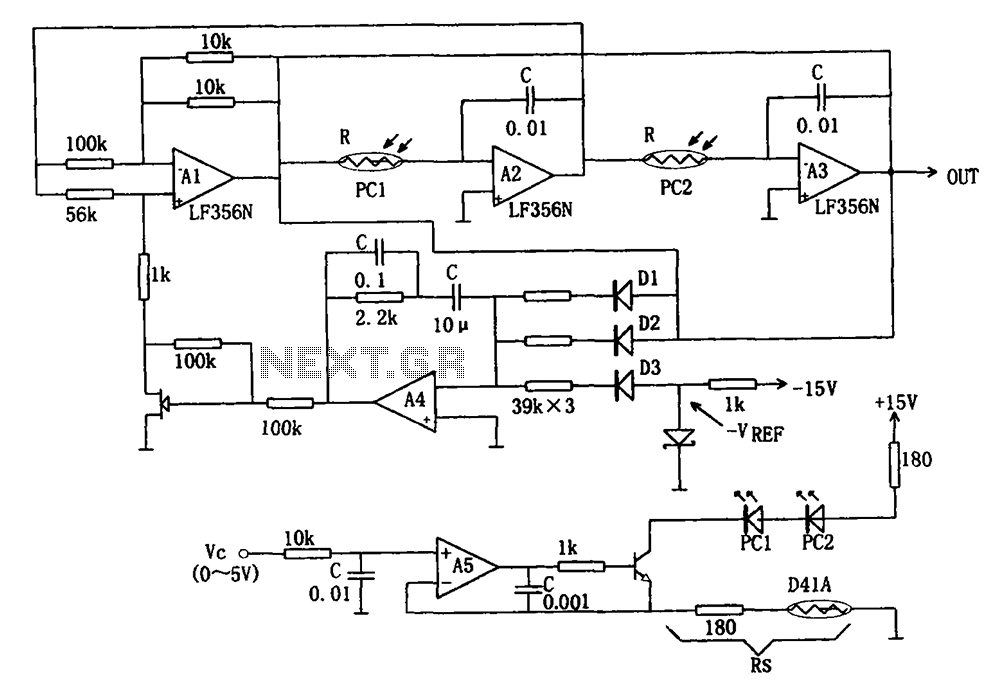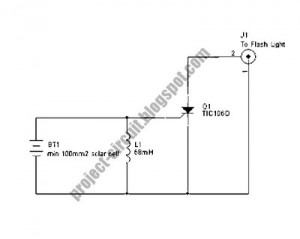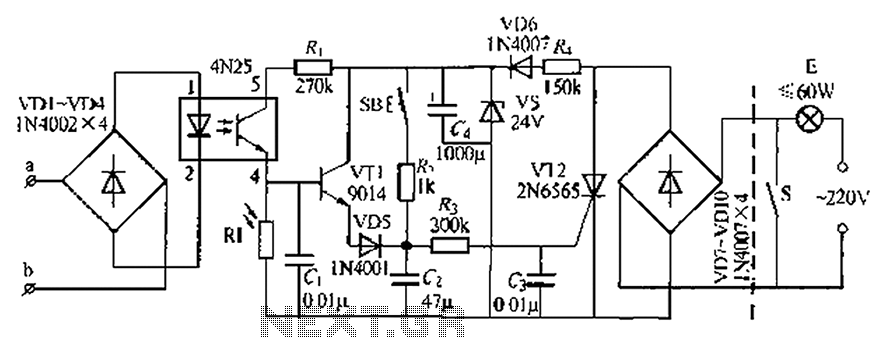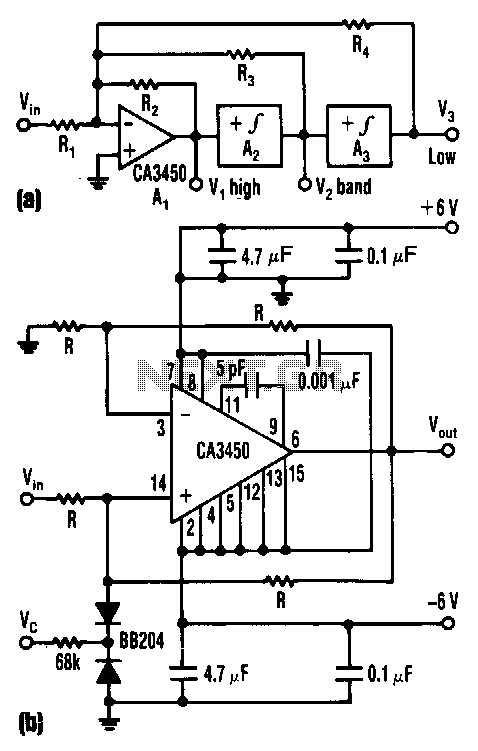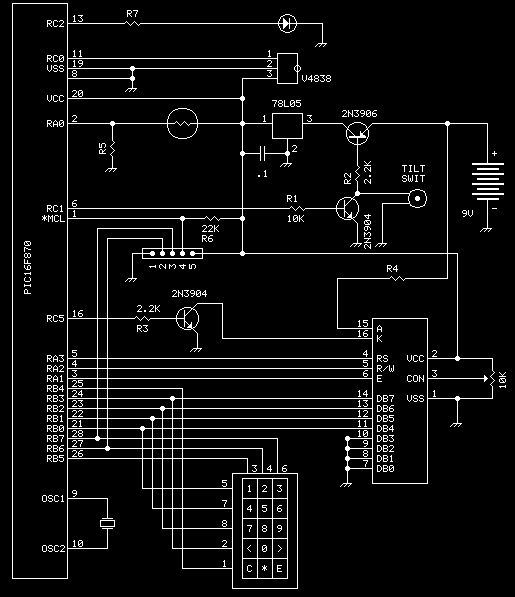
UM91214B IC For Radio Remote Control
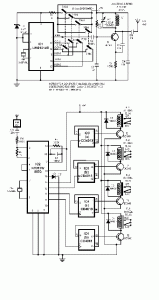
The following circuit illustrates a Radio Remote Control Circuit Diagram. This circuit is based on the UM91214B integrated circuit (IC) and features the use of DTMF (dual-tone multi-frequency) signaling.
The Radio Remote Control Circuit utilizing the UM91214B IC is designed to facilitate wireless control applications. This integrated circuit is particularly adept at processing DTMF signals, which are commonly used in telecommunications to convey information through audio signals. The circuit typically includes a transmitter and a receiver module, allowing for bidirectional communication.
The transmitter section of the circuit includes a keypad or a DTMF generator that produces dual-tone signals corresponding to specific keys pressed. These signals are modulated and transmitted via a radio frequency (RF) module. The RF module converts the electrical signals into radio waves, which can travel over distances without the need for physical connections.
On the receiving end, the circuit employs a compatible RF receiver module that demodulates the incoming radio signals back into electrical signals. The UM91214B IC processes these signals, decoding the DTMF tones to determine which command has been sent. The output of the IC can then be used to control various devices, such as motors, lights, or other electronic components, depending on the application.
Power supply considerations for the circuit must also be addressed, typically involving the use of a regulated power source to ensure stable operation of both the transmitter and receiver. Additionally, the circuit may incorporate various passive components, such as resistors and capacitors, to filter signals and stabilize the operation of the IC.
Overall, this Radio Remote Control Circuit using the UM91214B provides an efficient and reliable method for wireless control, leveraging DTMF technology to enable versatile applications in remote operation scenarios.The following circuit shows a Radio Remote Control Circuit Diagram. This circuit based on the? UM91214B IC. Features: use of DTMF (dual-tone . 🔗 External reference
The Radio Remote Control Circuit utilizing the UM91214B IC is designed to facilitate wireless control applications. This integrated circuit is particularly adept at processing DTMF signals, which are commonly used in telecommunications to convey information through audio signals. The circuit typically includes a transmitter and a receiver module, allowing for bidirectional communication.
The transmitter section of the circuit includes a keypad or a DTMF generator that produces dual-tone signals corresponding to specific keys pressed. These signals are modulated and transmitted via a radio frequency (RF) module. The RF module converts the electrical signals into radio waves, which can travel over distances without the need for physical connections.
On the receiving end, the circuit employs a compatible RF receiver module that demodulates the incoming radio signals back into electrical signals. The UM91214B IC processes these signals, decoding the DTMF tones to determine which command has been sent. The output of the IC can then be used to control various devices, such as motors, lights, or other electronic components, depending on the application.
Power supply considerations for the circuit must also be addressed, typically involving the use of a regulated power source to ensure stable operation of both the transmitter and receiver. Additionally, the circuit may incorporate various passive components, such as resistors and capacitors, to filter signals and stabilize the operation of the IC.
Overall, this Radio Remote Control Circuit using the UM91214B provides an efficient and reliable method for wireless control, leveraging DTMF technology to enable versatile applications in remote operation scenarios.The following circuit shows a Radio Remote Control Circuit Diagram. This circuit based on the? UM91214B IC. Features: use of DTMF (dual-tone . 🔗 External reference

